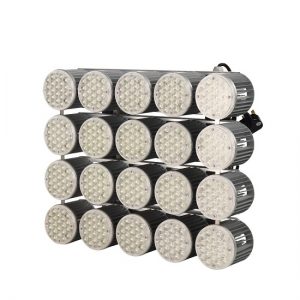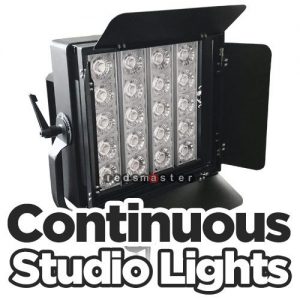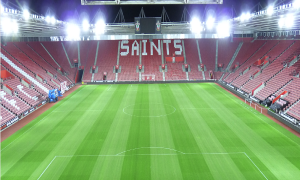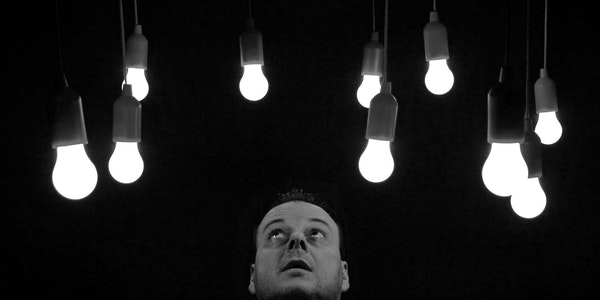In 2019, the LED industry is gradually moving from a mature stage to a growing stage. The scale of the industry is further expanded, and the penetration rate of the LED lighting market is gradually increasing. It has been promoted and used in landscape lighting, road lighting, commercial lighting and sports lighting, accelerating the penetration of household lighting. Market demand is segmented, and emerging application markets are gradually rising. Enterprise competition has intensified, and mergers and reorganizations have occurred frequently. The technical strength has gradually been highlighted, and a relatively complete R&D system has been initially formed from upstream chip materials, midstream device packaging and downstream applications. Traditional enterprises have accelerated their transformation, and emerging business models such as EMC and O2O have accelerated their penetration.
Market size
In 2019, the global LED market has grown rapidly. According to statistics from consulting institutions such as Strategies Unlimited, the global LED market reached US$68.6 billion, an increase of 79.1% from US$38.3 billion in 2015, the highest growth rate in the past five years.
Industrial structure
The main market driving force of the LED industry has gone through three development stages, namely the display and small-size backlight application stage, the medium and large-size backlight application stage, and the LED lighting application stage. In 2014, the LED backlight application market gradually became saturated, the market share dropped from 15% to 14%, the LED display application accounted for decline from 28% to 26%, and the LED general lighting application market continued to increase, from 29% in 2013 To 68%, of which automotive lighting applications accounted for 19%. Lighting applications have become a new wave of rapid growth in global LED applications.
According to the statistics of the Industrial Technology Research Institute of Taiwan, the compound annual growth rate of the global LED lighting market from 2010 to 2019 was 32%, maintaining a steady growth. In 2019, the global LED lighting market reached 68.68 billion U.S. dollars, an increase of 36% over 2018, the largest increase in recent years. The global LED lighting penetration rate has increased significantly from 11% in 2011 to 42%.
main feature
- Backlight and lighting have become important driving forces for industrial development
The main growth drivers for the growth of the global LED industry in 2019 come from backlight and lighting applications, which accounted for 25% and 51% respectively. The global demand for mobile terminals and flat-panel TVs has accelerated the application of LEDs in the backlighting field. In 2019, the penetration rate of LEDs in various backlight fields continued to increase, especially in the areas of medium and large-sized backlight monitors, tablets, flat-panel TVs, etc. The penetration and the number maintained a high growth rate, with penetration rates of 42% and 36% respectively And 28%. The advancement of LED lighting technology and the decline in prices have made it a reality for LEDs to enter the lighting field. In 2019, the global LED lighting penetration rate reached 41.8%, and it gradually entered general household lighting from outdoor lighting, commercial lighting, and stadium lighting, becoming the main driving force for the rapid growth of the LED industry.
- Policy support has become an important guarantee for promoting industrial growth
The global ban on incandescent lamps has entered a critical period. From the perspective of the time point, the major countries and regions that will eliminate incandescent lamps in 2015 will enter the 75W, 60W, and 40W elimination window. From the perspective of coverage, the United States, Canada, Mexico, Brazil, Argentina, the United Kingdom, Australia, the European Union, and Japan , South Korea, China and other countries and regions have entered the period of prohibition and elimination of incandescent lamps, which greatly stimulated the replacement and use of new light sources in 2019 and accelerated the promotion of LED lighting.
- Price drop and application market segmentation have become a development trend
In 2019, the LED bulbs of international lighting manufacturer Philips dropped from US$28 to US$8-10, and Osram seized the market with a price of less than US$10. Since the luminous efficiency is higher than that of energy-saving lamps, the price is lower than that of energy-saving lamps, and the life span is longer than that of energy-saving lamps, LED lighting products have become a powerful substitute for energy-saving lamps. Faced with the trend of falling prices, global LED companies are looking for subdivisions to make efforts. Key enterprises are moving toward the high end of the value chain, strengthening innovative research and development in sub-fields such as automotive lighting, plant lighting, and smart lighting, and providing alternative lighting solutions for different application environments.
Regional distribution
From the perspective of global LED supply regions, the countries and regions with a high share of global LED market supply in 2015 are still Japan, South Korea and Taiwan, with a total share of 66.6%. Japan is still the main supplier of LED chips and lighting, with a market share of 18.2%. South Korea has a relatively high market share in LED backlight applications. When the backlight market is saturated, its market share has dropped from 25.2% to 22.6%. Taiwan, China is actively deploying LED applications and becoming the main supply area for LED chips and packaging. Its market share has steadily increased to 21.8%. The United States has vigorously promoted LED lighting applications and has become a major supplier of LED chips, which has increased its market share to 28%. Europe developed new LED applications and became the main supplier of automotive lighting, with a market share of 8.7%.
From the perspective of global LED lighting market demand, the market demand in 2019 is mainly concentrated in Japan, China, Europe and the United States. Japan’s market demand still accounts for the largest share of the world, at 32.18%. However, as the market penetration rate tends to be saturated, the market share is gradually shrinking. China’s LED market demand ranks second. In 2019, driven by the demand for road lighting and office lighting, the market share of LED lighting in China increased from 19.68% in 2018 to 26.18%. Europe and the United States account for the same proportion, with market share of 19.85% and 18.97% respectively.
The LED lighting market in emerging markets has further opened up, with a market share of 17.94% in 2019, an increase of 1 percentage point from 2018. In 2019, the Russian market showed substantial growth in LED lighting, reaching US$2.88 billion, with a penetration rate of about 28%. The Southeast Asian market mainly includes six countries including Thailand, Singapore, Malaysia, Vietnam, Indonesia and the Philippines. The LED lighting market is about US$1.1 billion, and the LED penetration rate reaches 26%.
Classification and characteristics of LED
Classification of common LEDs
- According to the luminous color of LED, it can be divided into red, orange, green (yellow green, standard green and pure green), blue light and so on. In addition, some LEDs contain chips of two or three colors. According to whether the light emitting diode is doped with colored or colorless scattering agents, the above-mentioned colored LEDs can also be divided into four types: colored and transparent, colorless and transparent, colored scattering and colorless scattering. Diffuse LEDs are not suitable for use as indicator lights.

- According to the characteristics of light emitting surface, it can be divided into round light, square light, rectangle light, surface light emitting tube, side light tube, surface mounted micro tube, etc. According to the diameter, the circular lamps are divided into 2 mm, 4.4 mm, 5 mm, 8 mm, 10 mm and 20 mm. The angular distribution of circular luminous intensity can be estimated from the half value angle.
- According to the angular distribution of luminous intensity, there are three types:
- High directivity. Generally, it is a pointed epoxy package, or a package with a metal reflector without a scattering agent. The half value angle is 5 ° to 20 ° or less, which has high directivity. It can be used as a local lighting source or combined with a light detector to form an automatic detection system.
- Standard Type. It is usually used as indicator light, and its half angle is 20 ° to 45 °
- Scattering type. The half angle is 45 ° to 90 ° or more, and the amount of scattering agent is large.
4. According to the structure of light-emitting diodes, they are all epoxy encapsulated, metal base epoxy encapsulated, ceramic base epoxy encapsulated and glass encapsulated.
5. According to the luminous intensity and working current, there are ordinary brightness LED (luminous intensity is less than 10mcd); ultra high brightness LED (luminous intensity is more than 100mcd); the luminous intensity between 10 ~ 100mcd is called high brightness LED. Generally, the working current of LED is more than 10 Ma to tens of Ma, while the working current of low current LED is less than 2 mA.
Characteristics of LED
Light emitting diode (LED) is the third generation of semiconductor lighting source. This product has many fantastic advantages:
1) high light efficiency: the spectrum is almost all concentrated in the visible light frequency, and the efficiency can reach more than 50%. The visible light efficiency of incandescent lamp is only 10% – 20%
2) high light quality: because there is no ultraviolet and infrared in the spectrum, there is no heat and radiation, so it is a typical green lighting source. 
3) low energy consumption: the unit power is generally 0.05-1W, which can be tailored to meet different needs through cluster mode, with little waste. As a light source, its power consumption is only 1 / 8-10 of that of ordinary incandescent lamp under the same brightness
4) long life: the standard life of luminous flux attenuation to 70% is 100000 hours. Under normal conditions, a semiconductor lamp can be used for 50 years. Even people who live for a long time will use two lamps at most in their lifetime.
5) Reliable and durable: no tungsten wire, glass shell and other easily damaged parts, abnormal scrap rate is very small, maintenance costs are very low.
6) flexible application: small volume, can be planar packaging, easy to develop into light and short products, made into point, line, surface various forms of specific application products.
7) safety: the unit working voltage is about 1.5-5v.
8) green environmental protection: the waste can be recycled without pollution, and it does not contain mercury like fluorescent lamps.
9) short response time: suitable for frequent switching and high frequency operation.


